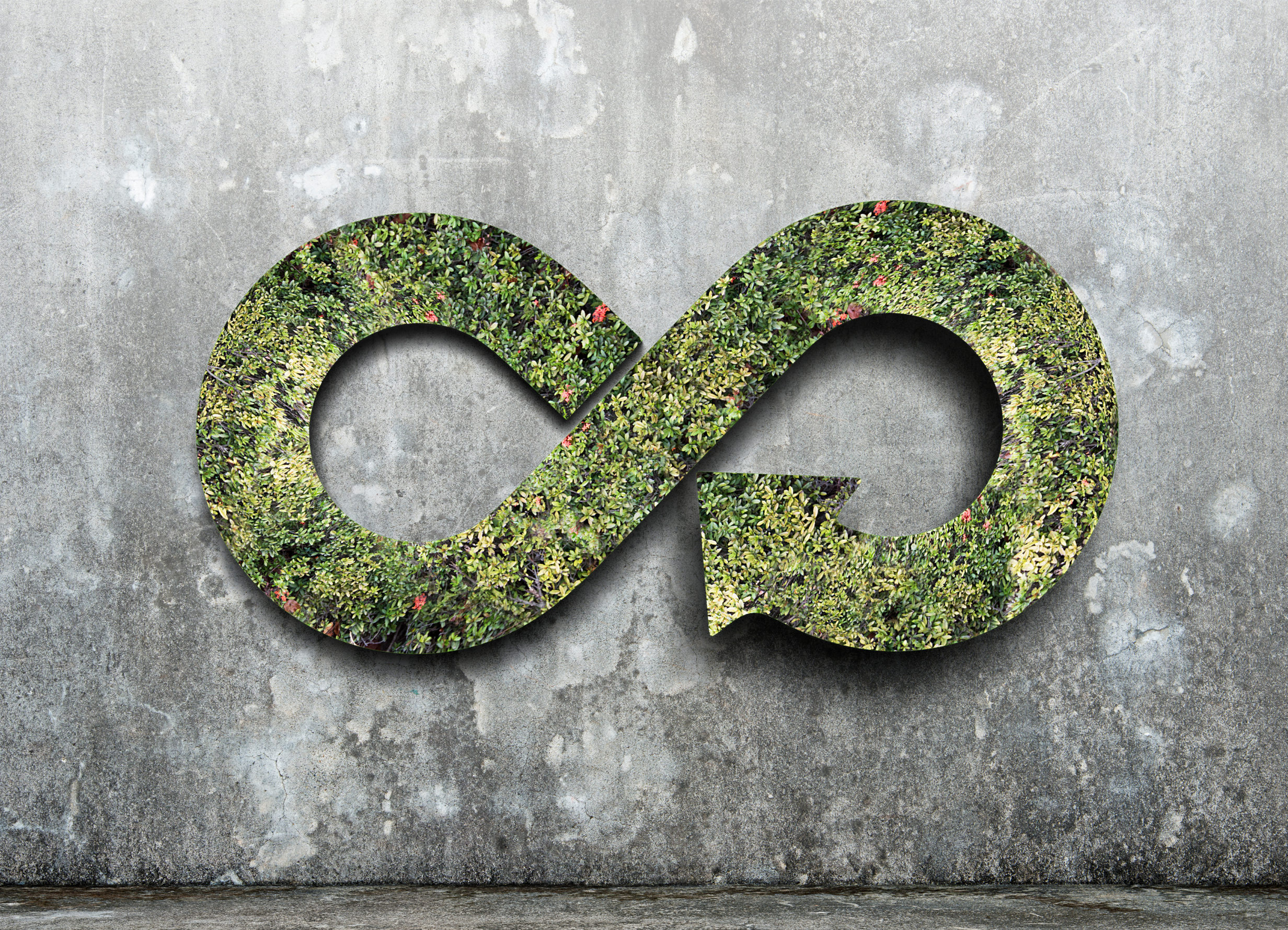Circular Economy for a Prosperous Future
We hear a lot about Circular Economy, and how its role is critical in combatting climate change, the effects of which are already being felt in the UK and across the world, but do we really understand what it means?
Perhaps one of the best descriptions is comparing circularity to a lending library. You return an expensive, hardbook book after reading so that someone else can read it, then someone else, and so on again for decades. In today’s system, relying solely on recycling to solve net zero challenges is the same as reading the book then pulping the pages to turn it into an egg carton. The value loss of natural resources used to put the book in your hands is enormous, not to mention the lost financial value. Recognising that a circular economy is not a financial model, but a framework of principles that are regenerative and restorative by design, the goal is to keep a systems perspective, identifying those unintended consequences and rebound effects of decisions made in isolation.
Chris Skidmore (Chair of the Net Zero Review) recently asked a really important question. How can we start to understand the cost of doing nothing versus the cost of transition? With the World Economic Forum estimating over half the world’s total GDP –$44 trillion of economic value – being moderately or highly dependent on nature and its services, the other big question is how do we accelerate transition knowing that time is short?
Believing that we have until 2050 to reduce emissions has been described as procrastination. The latest data shows the UK is experiencing warming temperatures. The decade up to 2021 has been 1.0°C warmer than the 1961 to 1990 average. 2022 was the UK’s hottest year on record, with an average year-round temperature above 10°C seen for the first time ever. If we are to mitigate climate change impacts by achieving the UK goal of 68% carbon emissions by 2030, a mindset shift is needed. There is a tendency to focus on efficiency at the expense of innovation, favouring the present at the expense of the future. However, as we know, carbon is only one part of the challenge, regeneration of the natural environment is critical to our personal health and wellbeing; put simply if nature gets sick it’s likely we will too. It seems too risky to allow ourselves to be trapped in carbon tunnel vision.
We are all intricately connected to the health of the natural world around us. Thriving natural ecosystems provide clean air to breathe and clean water to drink. Trees and plants absorb carbon dioxide and release oxygen. Species biodiversity play roles in maintaining the balance of ecosystems including the critical soil health, which is essential for food security and managing the rising cost of living. Wetlands and forests act as natural filters, cleansing water by absorbing pollutants and replenishing groundwater reserves. Healthy oceans play a crucial role in regulating the Earth’s climate. They act as a vast carbon sink, absorbing significant amounts of carbon dioxide from the atmosphere. In fact every second breath we take is made possible because of the variety of photosynthetic organisms that inhabit saltwater ecosystems giving us clean air. Causing constant disruption to the balance of nature’s systems will have an effect on life as we know it.
Amongst the complexity of change, how do we know we are doing the right thing, not just doing things right? Many leading organisations use Life Cycle Assessment (LCA) as a tool to assess environment impact. Whilst there is more work needed to align parity metrics and establish a standard methodology by industry, an LCA can be a good starting point for visibility of the wider trade-offs in decision making. While a product may have low operational energy consumption, its manufacturing phase might generate significant emissions, water pollution, demand for toxic chemicals or add problems for local authorities in finding end of life solutions. If data informs decisions at the design stage, the LCA benefit is likely to extend beyond a single organisation and offer advantages across the value chain. Its use can catalyse collaboration for innovation, and engagement with supply chain partners in addressing shared challenges, particularly in context of Carbon Border Adjustment Mechanism (CBAM) where high carbon materials are subject to levies. A credible LCA can promote transparency incentivising customers, consumers, investors and stakeholders to make more informed choices.
It’s not just the supply chain but internal teams too, how we balance the need for immediate short-term gains with future-proofing environmental concerns is complicated. Engaging employees, introducing circular economy training to increase capability, encouraging innovative thinking, exploring new solutions and investing in ecologically sound technologies can help to bridge the gap. The perception is that change is too difficult, in reality it’s not hard, but does require hard work and focus. Research shows specialist collaborations produce results that wouldn’t be possible when people think and work in isolation. Knowing as we do that almost every action has a reaction, how can we work more effectively for change to benefit society as a whole?
If we are to focus on a nature positive future, business, industry and society needs to reduce the impact that products and materials are currently having on the planet. The circular economy principles are essential to reducing warming temperatures, reducing the reliance of virgin materials as well as capturing long term value that builds resilience and creates new economic opportunities. By adopting a holistic and forward-thinking approach, we can make decisions that promote immediate benefits and the regeneration of the natural environment, ensuring a sustainable and prosperous future for generations to come.
By Elle Runton, Knowledge Transfer Manager – Net Zero
Related programme

Circular Economy Innovation Network
The Circular Economy Innovation Network aimed to enable stronger, more resilient industries working together, connecting, collaborating, and sharing experiences to achieve Net Zero through circular innovation.


